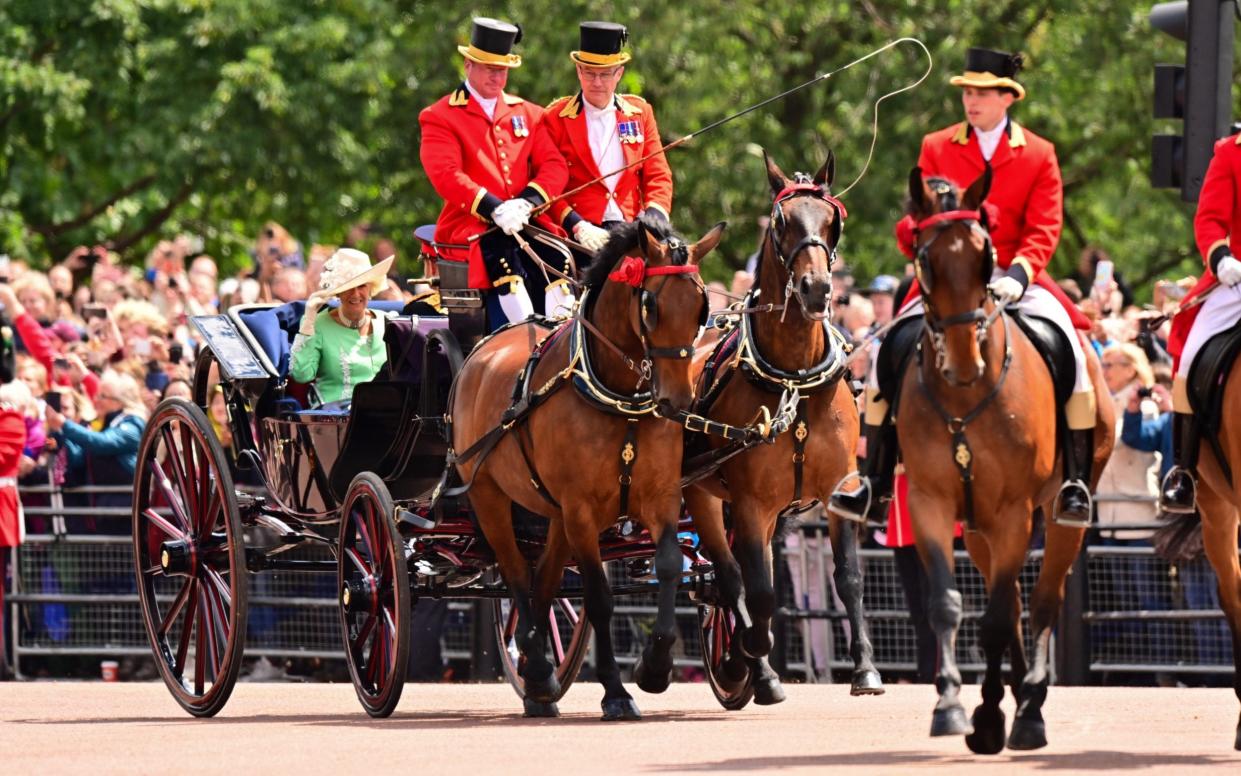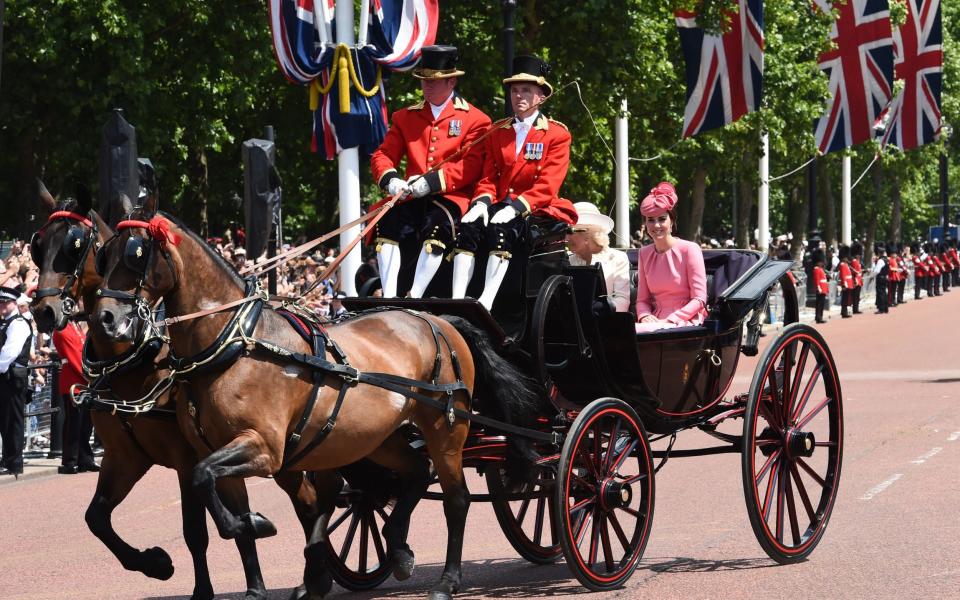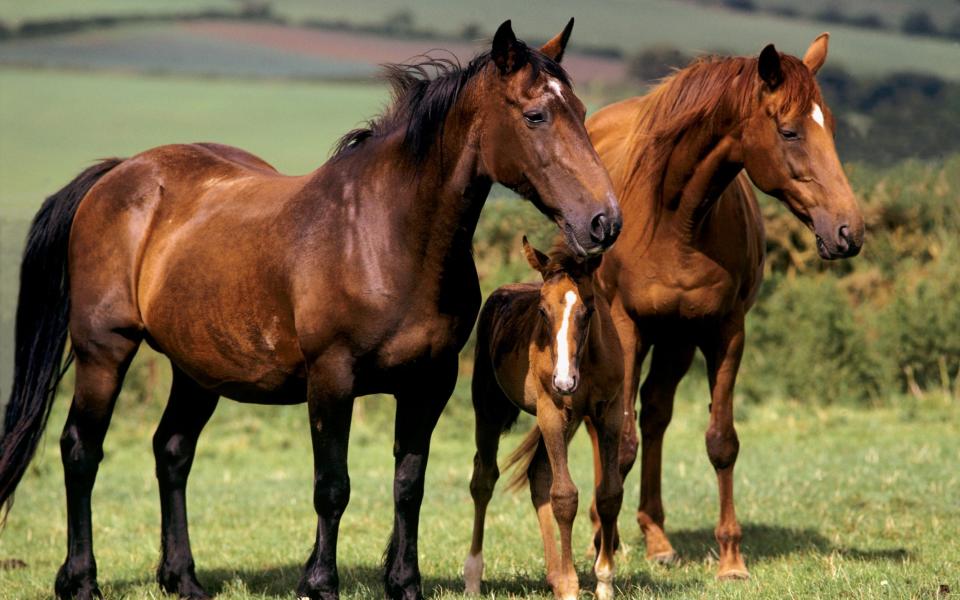New genetic tool saves Queen's favoured horse breed from extinction

A horse breed favoured by the Queen has been saved from the brink of extinction thanks to a new genetic analysis tool which prevents inbreeding.
Cleveland Bay horses were once a stalwart of English culture and heritage, used to pull farm machinery.
But after the conclusion of the First World War, during which they towed artillery, the breed suffered a dramatic dip in popularity and numbers dwindled.
By the 1960s there were only a handful of stallions left in Britain. A young Queen Elizabeth II intervened at this time of crisis and bought Mulgrave Supreme, one of the few remaining.
The royal affiliation triggered a deluge of stud requests, helping to inflate the population figures. Cleveland Bays are still closely tied to the Royal Family, and are one of just two breeds - along with Windsor Greys - housed at the Royal Mews.
But after the breed was saved, the issue of inbreeding arose.
By 1994, three per cent of the breed’s gene pool was being lost forever every generation and there was an effective breeding population of just 20 animals.

“This was a turning point: the breed could easily have become extinct if urgent genetic management had not been established,” said Prof Philippe Wilson and Dr Andy Dell from Nottingham Trent University, who set about creating a way for breeders to avoid matching up closely-related horses.
“Indeed, the breed was already seeing signs of increasing infertility with it becoming increasingly difficult to get mares in foal and then to bring those that did to full term and produce thriving youngstock.
“There was anecdotal evidence of the occurrence of genetically related arthritic and respiratory conditions.”
Inbreeding creates risk of genetic disease and deformities
If unchecked, inbreeding can lead to a high level of genetic diseases, shortened lifespan, infertility and deformities.
The Nottingham-based researchers spent 16 years undoing the inbreeding damage and working on a procedure to allow for the safe and sustainable breeding of Cleveland Bays.
Their main tool came courtesy of the Cleveland Bay Horse Society, which has studbooks dating back to 1885 and pedigree information stretching as far back as 1723.
This extensive family tree now contains more than 38 generations and is older than the United States of America.
Information contained within these pages formed the backbone of a new ‘Breed Conservation and Management System’ (BCAS) which allows breeders to see how closely related two Cleveland Bay horses are, and if they should be prevented from breeding.
Traffic-light system prevents closely related horses mating
Every mare/stallion pair gets a traffic-light rating based on their familial link and what the risk of inbreeding is. Green is encouraged; yellow is “best of the rest”; orange is discouraged; and red should be avoided “as they are highly inbred”.
The use of this tool prevented potentially closely related horses mating and producing highly inbred progeny and as of 2020 the effective population size was 171 and there are 100 purebred stallions globally, including 41 in the UK. The rate of inbreeding has also plummeted to just 0.5 per cent.

“The population is certainly now far more secure than it was before the work began,” the scientists said.
“The breed is in a far more secure position, although it is important to maintain such management practices to avoid such genetic issues evolving once again.”
Other species and breeds face a similar fate as the Cleveland Bays, and the BCAS tool could be reconfigured and repurposed to help them, the experts say.
“All livestock has to be recorded by law and we have created a tool which uses animals’ pedigree records and genetic status to inform breeding strategy,” said Dr Dell.
“We have shown this tool to work successfully in improving the population genetics of the endangered Cleveland Bay horse and we can apply our system to other endangered breeds.
“The BCAS system can be extended to any population with pedigree data, so the potential is manifest.”

